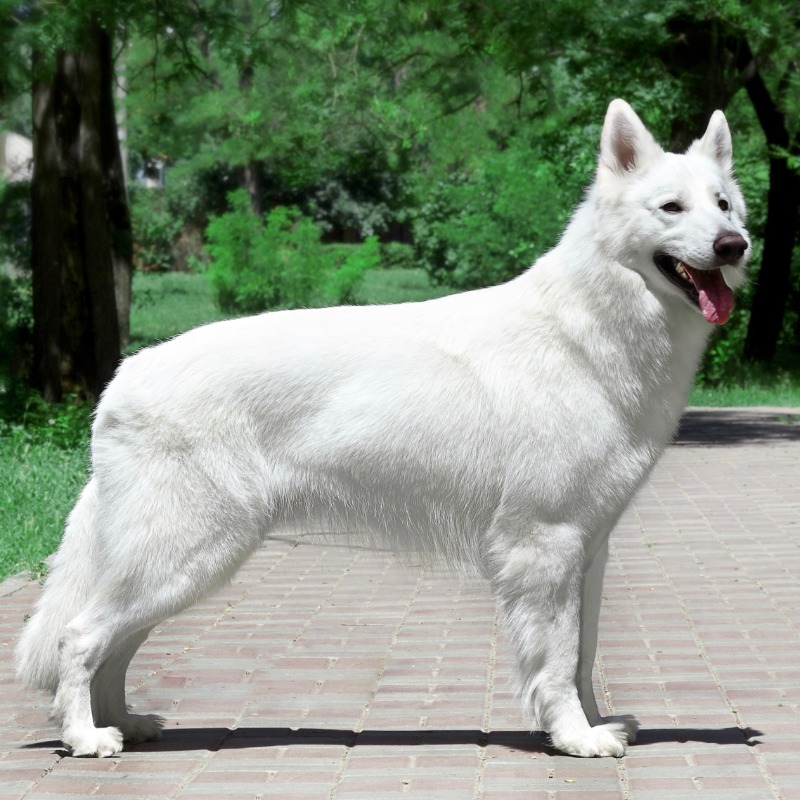Breeds
White Swiss Shepherd Dog

GROUP 5 - WORKING DOGS
Brief History
The first dogs of this breed were imported into Switzerland in the early 1970’s. However, it was not until 2001 that the FCI General Assembly accepted full breed recognition. Swiss was incorporated into the name not because it was a “Swiss” breed, but because the breed club in Switzerland officially requested that the breed be recognised by the FCI.
Average Life Span
When considering a dog, please realise that you are taking it on for its lifetime.
The average life span is 10 to 15 years.
Temperament
The White Swiss has a lively and balanced temperament and is friendly and devoted to his owner. They are never afraid or aggressive without provocation.
General Breed Description
A powerful, well-muscled, medium sized dog, with erect ears and a double coat which is either of medium length or long. Socialisation from an early age is important, and whilst the White Swiss can be stubborn or mischievous, the owner should be firm with training. Obedience training would be recommended. Coat colour is white.
Coat and Care Requirements
White Swiss Shepherds have a dense, close lying double coat. Monthly baths prevent matting of the coat, and whilst they can shed coat all year round, they will have two major coat drops a year. Regular brushing can reduce the amount of hair shed.
Size
Height: Males 58 to 66cms, Females 53 to 61cms.
Weight: Males 30 to 40kgs, Females 25 to 35kgs.
Health
All breeds have individual health issues. When speaking to breeders it is recommended you enquire about breed’s health and what health testing the breeder does. The White Swiss Shepherd is generally a healthy breed, however health conditions do occur occasionally. These may include hereditary diseases, Hip Dysplasia (HD) and Elbow Dysplasia (ED).
Suitability
White Swiss Shepherd Dogs are very loyal and trainable. They thrive on activity. However, a bored dog will dig large holes. The White Swiss Shepherd Dog loves his family, however, as with any breed, he should never be left alone with children. Elderly people may find the breed a handful.
In Conclusion
Now you know a little more about this breed. If you have decided this is the dog for you and wish to investigate further, please contact the Breed Club or Dogs Victoria. They will be able to give you information about available puppies and also suggest dog events where you can see the breed and speak to breeders. In this way you will gain a better perspective of the breed and its needs. With any breed of dog, it is important to research and determine suitability for your lifestyle before committing to a puppy which will be a part of your family for many years to come.
Whilst many breeds are recommended for families, it is imperative that when children are with dogs they are supervised at all times. Basic obedience training is a vital part of dog ownership.
Dogs Victoria is about the responsible ownership of all dogs and in particular the preservation of pure breeds.
Link to Dogs Australia Breed Standard: https://dogsaustralia.org.au/breed/detail/113
Breeders
Sorry, there are currently no breeders advertising for this breed. If you are a registered Dogs Victoria breeder and wish to advertise here please create an advertisement here.


